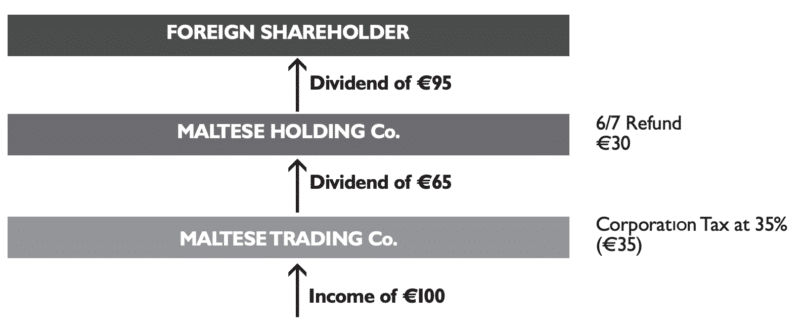
Update October 2023 – the NHR programme has been suspended indefinitely.
Portugal is one of my favorite countries in the world, and it also happens to have incredibly good conditions for those who wish to move there to optimise their tax situation.
In fact, combined with Malta for a corporate tax base, I believe it’s the best tax optimisation strategy in Europe for owners of small to medium businesses and location-independent entrepreneurs. Portugal is also great for high-net-worth individuals and high-earners within certain professions, as I will detail in this article.
The key to unlocking most of the benefits related to tax in Portugal is the NHR Programme.
The NHR programme was introduced by the Portuguese government in 2009 as part of its strategy to promote the country as a destination for highly skilled individuals, entrepreneurs, and investors. The programme aims to attract talent and investment by offering a favorable tax regime for a period of ten consecutive years, provided the applicants meet certain requirements.
Do you want to cut straight to the chase and know for sure if Portugal is the right place for you to move to? Schedule a consultation with my trusted Portuguese crypto lawyer to get all your questions answered.
Book a consultation with a Portuguese lawyer
Alternatively, are you still undecided about where to live or want to speak to me directly about crypto or other topics that I write about?
Under the NHR programme, qualifying individuals can benefit from a reduced personal income tax rate of 20% on their professional income earned in Portugal. This reduced tax rate is particularly advantageous when compared to Portugal’s standard progressive income tax rates, which can range from 14.5% to 48% depending on the level of income.
Moreover, certain types of foreign-sourced income may be exempt from taxation in Portugal under the NHR programme, depending on the country of origin and existing tax treaties. These exemptions can apply to income such as interest, dividends, pensions, and royalties. This benefit can be especially attractive for individuals with substantial income from abroad, such as retirees or investors.
The NHR programme also fosters a favorable environment for entrepreneurs and business owners. By offering a competitive tax regime, Portugal aims to stimulate innovation and economic growth, ultimately benefiting the country as a whole.
Eligibility Criteria for the NHR Programme
To qualify for the NHR programme, applicants must meet the following criteria:
- Be a tax resident in Portugal: To become a tax resident, you need to reside in Portugal for more than 183 days in a 12-month period. Alternatively, if you have a habitual residence in Portugal, meaning a permanent dwelling available to you on a continuous basis, you may also qualify as a tax resident.
- Not have been a tax resident in Portugal in the previous five years: This requirement is to ensure that the NHR programme targets new residents rather than those who have recently lived in the country. It is important to check your tax residency history to ensure you are eligible for the NHR programme.
- Qualify as a high-value-added activity professional or have foreign-sourced income: The Portuguese government has a list of high-value-added activities eligible for the NHR programme. This list includes, but is not limited to, professionals such as architects, engineers, scientists, artists, IT professionals, and senior managers. Additionally, individuals with a significant portion of their income derived from foreign sources may also qualify for the NHR programme.
Furthermore, the NHR programme has no minimum investment requirements or minimum stay requirements, making it a flexible option for those considering relocating to Portugal. However, it’s essential to keep in mind that tax residency rules and the criteria for qualifying as a high-value-added professional or having foreign-sourced income may be subject to change, so it’s crucial to stay up-to-date with the latest regulations and consult with a tax professional when considering applying for the NHR programme.
The Application Process for the NHR Programme
The application process for the NHR programme involves several steps, which are detailed below:
- Obtain a Portuguese tax identification number (NIF): Before you can apply for the NHR programme, you need a Portuguese tax identification number. This can be obtained by visiting the local tax office (Finanças) or through a Portuguese tax representative, who can help you with the entire process. To obtain your NIF, you’ll need to provide identification, such as a passport, and proof of address.
- Register as a tax resident in Portugal: Once you have your NIF, you will need to register as a tax resident in Portugal. This involves providing proof of residency, such as a rental agreement or property deed, and completing the relevant forms at the local tax office. Keep in mind that you’ll need to meet the tax residency requirements mentioned earlier, either by residing in Portugal for more than 183 days in a 12-month period or having a habitual residence in the country.
- Apply for the NHR programme: Within six months of becoming a tax resident, you can submit your NHR application to the Portuguese tax authorities. The application can be made online through the Portuguese Tax Authority’s website or in person at the local tax office. The process may require submission of supporting documents, such as proof of residence and evidence of professional qualifications, as well as information about your foreign-sourced income.
- Wait for approval: The approval process for the NHR programme may take a few months. If your application is successful, you will receive a certificate confirming your NHR status, which will be valid for ten years. During this time, you’ll need to maintain your tax residency in Portugal and comply with all applicable tax laws and reporting requirements.
If you’re new to Portugal, you should know that it’s a highly bureaucratic country and it is always much better to hire a Portuguese lawyer to take care of administrative stuff for you, unless you have a lot of time on your hands and you are a very patient person.
Advantages of the NHR Programme
The NHR programme offers several advantages for those considering moving to Portugal:
- Reduced income tax rate: As mentioned earlier, the 20% flat rate on professional income earned in Portugal is significantly lower than the standard progressive rates, which can be as high as 48%. This reduced tax rate can lead to substantial savings for qualifying individuals.
- Tax exemptions on foreign-sourced income: The NHR programme’s tax exemptions on various types of foreign-sourced income, such as pensions, dividends, interest, and royalties, can be particularly advantageous for retirees and investors with substantial income from abroad. These exemptions can help minimize your overall tax liability and protect your assets.
- No wealth tax: Portugal does not impose a wealth tax, making it an attractive destination for high-net-worth individuals looking to protect their assets.
- No inheritance tax for close relatives: While Portugal does have inheritance and gift taxes, close relatives, such as spouses, children, and parents, are exempt from these taxes. This can provide peace of mind and financial security for your family.
- Double tax treaties: Portugal has established double tax treaties with numerous countries, which can help prevent double taxation on your income and ensure you’re taxed only once on the same income. These treaties can help simplify your tax situation and reduce your overall tax burden.
- Attractive lifestyle and climate: In addition to the tax benefits, Portugal offers a high quality of life, with a warm climate, beautiful landscapes, rich culture, and excellent healthcare and education systems. The country’s safety, friendly locals, and relatively low cost of living further add to its appeal as a relocation destination.
- Low property taxes: Portugal has relatively low property taxes compared to many other countries. There are two main property taxes: the Municipal Property Tax (IMI) and the Property Transfer Tax (IMT). The IMI is an annual tax based on the property’s assessed value and varies between 0.3% and 0.45%, depending on the municipality. The IMT is a one-time tax paid when purchasing a property, with rates varying depending on the property’s value and type. These comparatively low property tax rates can be appealing to those looking to invest in Portuguese real estate or move to the country under the NHR programme.
Disadvantages and Considerations of the NHR Programme
While the NHR programme has numerous advantages, there are also some considerations and potential drawbacks to keep in mind:
- Limited duration: The NHR status is valid for a maximum of ten years. After this period, you will be subject to the standard Portuguese tax regime, which might be less favorable. It’s important to plan for the long term and consider the potential tax implications once your NHR status expires.
- Potential changes in legislation: Tax laws and regulations are subject to change, and there is no guarantee that the NHR programme will remain unchanged throughout its ten-year duration. The general principle however is that once you are in the programme your conditions will remain unchanged during the 10-year period.
- Compliance with reporting requirements: As an NHR, you are required to submit annual tax returns in Portugal, even if your foreign-sourced income is exempt from taxation. This can be time-consuming and may require the assistance of a tax professional. You may also need to continue filing tax returns in your home country, depending on its tax residency rules.
- Social security contributions: While the NHR programme offers reduced income tax rates, you may still be required to pay social security contributions in Portugal, which can be substantial depending on your income. It’s essential to factor in these contributions when evaluating the overall financial benefits of the NHR programme.
- Exit strategy: Before moving to Portugal, it’s essential to consider your exit strategy, as moving back to your home country or to another jurisdiction after benefiting from the NHR programme may have tax implications. Consulting with a tax professional can help you plan for potential scenarios and ensure a smooth transition when your NHR status expires or if you choose to leave Portugal.
Is the NHR Programme Here to Stay?
The long-term prospects of the NHR programme depend on various factors, including the evolution of Portugal’s economic, political, and fiscal landscape, as well as changes in international taxation standards and practices. As of now, the NHR programme has been successful in attracting individuals with high-value-added professional activities, retirees, and investors to Portugal, contributing to the country’s economic growth and development.
Keep the following points in mind when considering the long-term prospects of the NHR programme:
- Legislative changes: Tax laws and regulations, including those governing the NHR programme, may change over time. Changes may occur due to shifts in government priorities, changes in the political climate, or in response to international pressure to adopt new tax standards. It’s essential to stay informed about any legislative changes and consult with a tax professional to ensure you’re prepared for potential alterations to the NHR programme.
- International tax cooperation and transparency: In recent years, there has been a global push towards increased tax transparency and cooperation between countries to combat tax evasion and avoidance. This trend could potentially impact the NHR programme, as international tax standards evolve and countries may be required to share more information about their tax residents.
- Portugal’s economic situation: The long-term success of the NHR programme may also be influenced by the overall economic situation in Portugal. For example, if the country experiences a downturn or faces fiscal challenges, the government may decide to revise the NHR programme or introduce new tax measures to boost revenue.
- Public opinion and perception: The NHR programme may be subject to scrutiny and criticism, as some argue that it provides preferential treatment to certain individuals and may contribute to income inequality. Public opinion and political pressure could lead to changes in the programme or its eventual discontinuation.
While there will always be a certain level of uncertainty around such programmes, the programme has been in operation since 2009, so I wouldn’t be so concerned about it disappearing from one year to the next.
Is the NHR Also Good for Non-Europeans?
While the programme’s primary target audience is European citizens, the favorable tax regime and Portugal’s attractive lifestyle have made it appealing to people from various non-European countries as well.
I would particularly point out the big influx of people from the USA, especially from the West Coast. My understanding, based on many chats with immigrants from the US, is that Portugal and the NHR programme offer them a chance to reset their lifestyle when compared to the US. I would single out a few issues these people see in their home country:
- Political polarization
- Woke culture, especially in California
- Unhealthy lifestyle
- Lack of exposure to other cultures
If you take all that and in addition keep in mind the low-tax benefits of Portugal, and the climate similarity of Portugal to the West Coast of the USA, it’s easy to see why it becomes such an attractive proposition.
Here are the main factors that make the NHR programme appealing to Americans:
- Tax benefits: The NHR programme offers a 20% flat rate on professional income earned in Portugal and tax exemptions on certain types of foreign-sourced income, such as pensions, dividends, interest, and royalties. These tax benefits can help Americans optimize their tax situation and potentially lower their overall tax burden.
- Double taxation treaty: Portugal and the United States have a double taxation treaty in place, which helps prevent American citizens from being taxed twice on the same income. This treaty can simplify tax situations for Americans living in Portugal and ensure they are not subject to double taxation.
- Visa options: Americans can apply for various visa options, such as the D7 passive income visa, which allows individuals with sufficient income from sources like pensions, rental income, or investments to reside in Portugal. The Golden Visa programme is another option for American investors who make qualifying investments in Portuguese real estate or meet other investment criteria.
- Lifestyle: Portugal offers a high quality of life, with a warm climate, beautiful landscapes, rich culture, excellent healthcare and education systems, and a relatively low cost of living. The country’s safety, friendly locals, and English-speaking population make it an attractive destination for Americans looking to relocate.
However, there are also some unique challenges that Americans must consider when relocating to Portugal and benefiting from the NHR programme:
- U.S. tax obligations: As a U.S. citizen, you are required to file an annual tax return with the Internal Revenue Service (IRS) and report your worldwide income, regardless of where you live. While the double taxation treaty and the Foreign Earned Income Exclusion can help minimize double taxation, Americans benefiting from the NHR programme must still comply with U.S. tax laws and reporting requirements.
- Foreign Bank Account Reporting (FBAR): U.S. citizens living in Portugal may also need to file a Report of Foreign Bank and Financial Accounts (FBAR) with the U.S. Department of the Treasury if they have one or more foreign financial accounts with an aggregate value exceeding $10,000 at any time during the calendar year.
- Foreign Account Tax Compliance Act (FATCA): U.S. citizens residing in Portugal are also subject to the Foreign Account Tax Compliance Act (FATCA), which requires them to report their foreign financial assets on Form 8938 if the total value exceeds certain thresholds.
Given these unique challenges, it is crucial for American citizens considering the NHR programme to consult with tax professionals experienced in both U.S. and Portuguese tax laws to ensure compliance and make the most of the available tax benefits.
Madeira – A Special Economic Zone
The International Business Centre of Madeira (IBCM) is a special economic zone established by the Portuguese government to promote economic development on the island of Madeira. The IBCM offers one of the most favorable tax regimes in Europe for companies and individuals, attracting both foreign and domestic investment. The main benefits provided by the IBCM are as follows:
- Reduced corporate tax rates: Companies licensed to operate within the IBCM can benefit from a reduced corporate tax rate of 5% on their taxable income, which is significantly lower than the standard corporate tax rate in Portugal (currently 21%). This reduced rate applies until December 31, 2027, under the current legal framework.
- Exemption from withholding taxes: Dividends, interest, and royalties paid by IBCM-licensed companies to non-residents are exempt from withholding taxes in Portugal. This exemption also applies to payments made between IBCM-licensed companies.
- Exemption from property transfer tax (IMT) and stamp duty: Companies licensed to operate in the IBCM are exempt from property transfer tax (IMT) and stamp duty on the acquisition of real estate for their business activities within the IBCM.
- Exemption from municipal property tax (IMI): IBCM-licensed companies are exempt from the annual municipal property tax (IMI) on real estate used for their business activities within the IBCM.
- Reduced social security contributions: Employees working for IBCM-licensed companies benefit from a reduced social security contribution rate of 7.5% on their gross remuneration, compared to the standard employee contribution rate of 11%.
- Access to Portugal’s extensive double tax treaty network: Companies operating within the IBCM can benefit from Portugal’s extensive network of double tax treaties, which can help prevent double taxation and facilitate cross-border transactions.
- EU and Madeira Free Trade Zone benefits: Madeira is part of the European Union, and companies operating in the IBCM can benefit from the EU’s single market and free movement of goods, services, capital, and people. Additionally, the Madeira Free Trade Zone offers customs exemptions and benefits for companies engaged in international trade.
The IBCM’s favorable tax regime is subject to specific conditions and requirements, including substance requirements, minimum investment thresholds, and job creation targets. If you’re interested in taking advantage of the IBCM’s tax benefits you should consult with a tax lawyer to make sure this is a feasible option for you.
Criticisms of the NHR Programme and Changes Over Time
The NHR programme has faced criticisms and pressure to change from various quarters. Some of the main concerns and criticisms include:
- Tax fairness and income inequality: Critics argue that the NHR programme benefits wealthy individuals, providing them with preferential tax treatment and contributing to income inequality. There is a concern that the programme may disproportionately benefit high-income individuals and foreign investors while leaving the general population to bear a larger share of the tax burden.
- Potential for tax evasion: Some critics argue that the NHR programme could be used as a tool for tax evasion or aggressive tax planning by individuals seeking to exploit the tax exemptions and reduced tax rates. This concern is heightened by the global push for increased tax transparency and cooperation between countries to combat tax evasion and avoidance.
- Brain drain and competition: Another criticism is that the NHR programme may contribute to a “brain drain” in other countries by attracting skilled professionals and wealthy individuals to Portugal. The programme’s benefits can create a competitive environment where countries try to offer more attractive tax regimes to lure talent and investment, potentially creating a race to the bottom.
- Loss of potential tax revenue: Some argue that the NHR programme may lead to a loss of potential tax revenue for the Portuguese government, as individuals and businesses benefiting from the programme pay lower tax rates or are exempt from certain taxes.
In response to these criticisms and pressures, there have been some changes to the NHR programme over time, such as updating the list of qualifying high-value-added activities and introducing a minimum tax on foreign pension income. The latter was mainly due to pressure from Nordic countries who saw a significant number of their pensioners move to Portugal to avoid paying any tax back in their home country and enjoy a better lifestyle.
Is the NHR for You?
The Portuguese NHR programme offers a range of tax benefits for individuals considering moving to the country, including reduced income tax rates and exemptions on certain types of foreign-sourced income.
I hope that this article has given you a good overview of how the NHR programme works. However, to understand your eligibility, the application process, and the potential implications of becoming a Non-Habitual Resident in Portugal, the next step is definitely that of contacting a competent Portuguese lawyer who can guide you further.


 Scalable Capital
Scalable Capital

